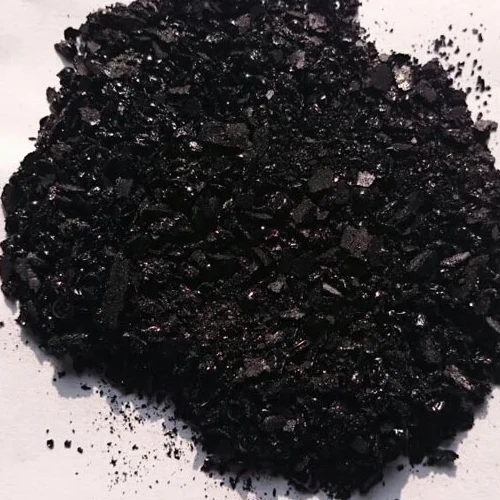Exploring the Vibrant World of Indigo Dye and Its Colorful Cultural Significance
The Allure of Indigo Dye A Journey Through Color and Culture
Indigo dye, with its rich history and captivating hues, has long held a prominent place in the world of textiles and artistry. The deep, vibrant blue of indigo is not just a color; it is a symbol of cultural heritage, craftsmanship, and tradition that spans continents and centuries. From ancient civilizations to modern fashion runways, indigo dye continues to influence and inspire, weaving a narrative that connects people across time and space.
Historically, indigo dye has been derived from the leaves of the indigo plant, primarily *Indigofera tinctoria*. The process of extracting dye from these leaves is both an art and a science, requiring skilled hands and a deep understanding of chemistry. The leaves are harvested and fermented to produce a pigment that transforms into a stunning blue when exposed to air. This color is often described as both calming and invigorating—a paradox that invites contemplation and creativity.
The Allure of Indigo Dye A Journey Through Color and Culture
The introduction of indigo to the Western world during the 16th century marked a significant shift in the textile industry. European demand for the vibrant blue grew, leading to the establishment of indigo plantations in the Americas. This trade, however, was not free from controversy, as it was intertwined with the horrors of colonialism and the exploitation of enslaved individuals. The story of indigo is thus layered, reflecting both beauty and tragedy, and serves as a reminder of the historical contexts that shape our appreciation of color and craft.
indigo dye color

In contemporary times, indigo has experienced a renaissance, finding its way back into popular culture and fashion. Designers and artisans are rediscovering traditional techniques, such as shibori (a Japanese tie-dye method) and batik (a wax-resist dyeing technique from Indonesia), to create modern yet timeless pieces. The resurgence of interest in sustainable and eco-friendly fashion has further propelled indigo into the spotlight, as many artisans embrace natural dyeing methods that respect the environment and promote local economies.
Beyond its aesthetic appeal, indigo dye also carries a message of sustainability. The revival of natural dye processes not only minimizes the harmful effects of synthetic dyes on ecosystems but also celebrates biodiversity and regional agricultural practices. By choosing indigo-dyed products, consumers are increasingly aware of their impact on the environment and are leaning towards choices that resonate with their values.
As we navigate a world that often feels oversaturated with artificial colors and fast fashion, the allure of indigo stands as a testament to the beauty of authenticity. Each indigo-dyed fabric carries with it a history, a connection to nature, and a story of resilience. It reminds us that colors are not merely visual phenomena but threads that weave together human experiences, history, and culture.
In conclusion, indigo dye transcends mere aesthetics. It invites us to reflect on our cultural heritage, explore sustainable practices, and appreciate the artisans who keep these traditions alive. From the ancient fields of India to the fashion corridors of today, indigo continues to thrive, its deep blue hue enchanting hearts and minds, one fabric at a time.
-
The Timeless Art of Denim Indigo Dye
NewsJul.01,2025
-
The Rise of Sulfur Dyed Denim
NewsJul.01,2025
-
The Rich Revival of the Best Indigo Dye
NewsJul.01,2025
-
The Enduring Strength of Sulphur Black
NewsJul.01,2025
-
The Ancient Art of Chinese Indigo Dye
NewsJul.01,2025
-
Industry Power of Indigo
NewsJul.01,2025
-
Black Sulfur is Leading the Next Wave
NewsJul.01,2025

Sulphur Black
1.Name: sulphur black; Sulfur Black; Sulphur Black 1;
2.Structure formula:
3.Molecule formula: C6H4N2O5
4.CAS No.: 1326-82-5
5.HS code: 32041911
6.Product specification:Appearance:black phosphorus flakes; black liquid

Bromo Indigo; Vat Bromo-Indigo; C.I.Vat Blue 5
1.Name: Bromo indigo; Vat bromo-indigo; C.I.Vat blue 5;
2.Structure formula:
3.Molecule formula: C16H6Br4N2O2
4.CAS No.: 2475-31-2
5.HS code: 3204151000 6.Major usage and instruction: Be mainly used to dye cotton fabrics.

Indigo Blue Vat Blue
1.Name: indigo blue,vat blue 1,
2.Structure formula:
3.Molecule formula: C16H10N2O2
4.. CAS No.: 482-89-3
5.Molecule weight: 262.62
6.HS code: 3204151000
7.Major usage and instruction: Be mainly used to dye cotton fabrics.

